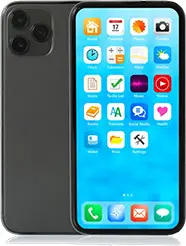Stretching limited funds is tricky for lower income families trying to cover basic needs. But, budgeting is essential to save money and achieve financial goals on a tight budget.
This post shares the best budgeting techniques to cut expenses and bank more savings each month!
Choose Your Best Budgeting Method
Before diving into specific savings goals and tips, let’s review popular budgeting approaches lower-income families can use:
- Zero-based budgeting – When using the zero-based budget system, all your income is assigned to expenses, savings, and debt payments until everything balances to zero.
- 50/30/20 budget – 50% of income covers needs, 30% goes to wants, 20% is for savings and debt payments. Simple with just 3 categories.
- Envelope budgeting system – Cash for budget categories goes into labeled envelopes. Provides visual spending control.
- Pay-yourself-first budget- Income automatically goes to savings first before paying expenses. Helps build savings habits.
These budgeting methods each have pros and cons. Try one for a month to see if it fits your style. You may need to tweak and combine approaches. The key to best budgeting methods is finding a system that gives you spending awareness and accountability.
Spend Less on Food
Groceries and dining out take a big bite out of tight budgets. Try these ways to trim food costs:
- Buy store brand items instead of pricier name brands. The quality and nutrition are often the same for way less.
- Clip and use both paper and digital coupons for grocery and restaurant deals. Search online and store apps.
- Shop sales and specials based on store flyers and apps. Stock up on deeply discounted items.
- Meal plan around ingredients you have or can get for cheap. Avoid food waste.
- Cook at home rather than eat out. Make extra portions to reheat for leftovers.
- Buy in bulk for items you use frequently. Split bulk packs with family or friends.

Slash Housing & Utility Costs
Housing is likely your biggest mandatory expense. Try these tips to reduce what you pay:
- Downsize to a smaller living space if you have unused rooms. Saves on rent/mortgage, utilities, and taxes.
- Enroll in rental assistance programs like Section 8 if eligible. Provides subsidized housing.
- Caulk and weather-strip around doors, windows and outlets to seal in cooled/heated air.
- Add insulation in attics, basements and walls to improve temperature regulation.
- Install LED light bulbs and smart power strips. Use fans and natural lighting.
- Lower thermostat temperature a few degrees in winter. Wear layers to stay comfortably cool.
Cut Transportation Expenses
Getting around taps your wallet. Use these tricks to drive and ride for less:
- Use public transit discounts for seniors, students and riders with disabilities to save 50% or more.
- Get rid of an extra vehicle if your family has more than you need.
- Walk or bike for shorter trips. Skipping just 2 gallons of gas a week saves over $100 annually.
- Carpool with others going the same way when possible. Take turns driving to split gas costs.
Enjoy Free or Cheap Entertainment
Having fun doesn’t have to break the bank account. Here are thrifty entertainment options:
- Use your local library to borrow movies, music, books and more for free.
- Explore free events like concerts, classes, and activities offered in your community, especially in summer.
- Pursue hobbies like reading, writing, crafting, drawing, and exercising at home for little or no cost.
- Avoid impulse purchases. Give yourself time to decide if an item is really worth the money.
- Shop thrift stores and yard sales for games, books, clothing and more at ultra-low prices.

Practice Smart Budgeting & Money Management
How you handle your money matters. Implement these three budgeting strategy best practices:
- Review expenses and cut unnecessary subscriptions, services and other costs.
- Create a budget aligned with your income and stick to it. Use a free budgeting app to help track spending.
- Automate bill payments so you never miss a due date. Avoid late fees and penalties.
- Build an emergency fund with even small contributions for unexpected expenses.
- Shop with grocery and shopping lists to curb impulse buys. Wait for sales on bigger purchases.
- Learn to meal plan, coupon and budget.
Tap Assistance Programs and Discounts
The government provides vital assistance to lower-income families. Take advantage of these options:
SNAP
The Supplemental Nutrition Assistance Program (SNAP) provides monthly benefits on an EBT card to purchase groceries. Eligibility and benefit amounts are based on your household size, income, and other factors. SNAP can help free up money to pay for other essential expenses.
Medicaid
Medicaid provides free or low-cost health insurance coverage to qualifying low-income individuals and families. Benefits include doctor visits, hospital care, prescriptions, hearing services, home healthcare and more. Medicaid significantly reduces medical costs.
Section 8 Housing
Section 8 rental assistance helps pay landlord rent payments through subsidized vouchers. Tenants pay 30% of adjusted gross income toward rent. Eligibility is based on income limits and other criteria. Section 8 makes housing more affordable.
LIHEAP
The Low Income Home Energy Assistance Program (LIHEAP) issues heating bill grants and free home weatherization upgrades for qualifying households to reduce utility costs. LIHEAP helps you use less energy and pay energy bills.
Lifeline & ACP
Lifeline and the Affordable Connectivity Program offer free or discounted home internet and cell phone service to eligible households. This helps reduce the cost of staying connected.
Get FREE Cell Phone Service with EASY Wireless
EASY Wireless provides FREE cell service with Unlimited Talk Text, and Data for eligible households when you sign up and qualify for the Lifeline and ACP programs through our online portal. Having phone costs covered lets you reallocate money to food, utilities, medical care, and other essential expenses.
Check your eligibility and learn more here.
Use Your New Savings Account for Debt Repayment
Once you start spending less through budgeting and tapping assistance programs, you’ll likely have extra funds each month. One of the best ways to allocate these into a savings account is toward repaying debt faster.
Make a list of all your monthly expenses and debts ordered by interest rate, with the highest rate debt first. Pay the minimum on everything except the first debt. Put as much money as you can towards the highest interest rate debt until it is fully repaid.
Then move to the debt with the next highest interest rate. This “debt avalanche” method saves you the most in interest costs compared to other approaches.
Automate payments to stay on track. Paying more than the minimum accelerates how quickly you become debt-free. Consult a nonprofit credit counseling agency if you need help managing debt.
Eliminating debts boosts your own monthly income and cash flow going forward. You’ll have more money to save and spend on needs once debts are repaid.
Taking Control of Your Financial Starts with Simple Budgeting Methods
You can implement many practical budgeting techniques to spend less and achieve financial goals. Small daily changes make a big difference over time. Use these budgeting tips to save more each month! Start with 2-3 strategies that fit your lifestyle and watch your debt fall and your savings grow.


